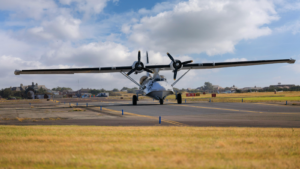This article dives into the science and technology behind aerospace sealing solutions. It explores how these small but mighty components withstand extreme conditions, and the role they play in the broader context of space exploration. So, if you’ve ever wondered what keeps the harshness of space at bay, you’re in for a treat. Let’s embark on this fascinating journey together, one seal at a time.
Aerospace Sealing Solutions
Durability and Performance
High durability and noteworthy performance constitute principal features of aerospace sealing solutions. For instance, gaskets and O-rings endure rigorous conditions, guaranteeing uninterrupted service throughout a spacecraft’s life cycle. These seals demonstrate an impressive mechanical strength, resisting compression and maintaining shape under stress.
Resistance to Environmental Factors
Aerospace sealants exhibit formidable resistance to various environmental factors. Made from robust materials, sealants can tolerate extreme temperatures, both scorching and freezing. They’re resilient to radiation and exhibit excellent thermal stability. Thus, these seals provide a shield against the unforgiving environment of space.
Commonly Used Sealing Materials

Aerospace relies heavily on certain sealing materials. Polymers, such as elastomers, are a mainstay due to their durability and flexibility. Silicone, nitrile, ethylene propylene diene monomer (EPDM), and fluorosilicone are among commonly used elastomers. For instance, silicone delivers excellent high-temperature resistance, accommodating heat-intensive applications. Another example, nitrile, is highly resistant to oils and fuels, making it an ideal choice for automotive and aeronautical use.
Material Selection and Performance Expectations
The process of material selection hinges on performance expectations. High flexibility, resistance to extreme temperatures, exposure to harsh chemicals, and rigorous performance are typical requirements for aerospace sealants. EPDM, for example, is favored for its superior resistance to weathering, heat, and moisture. Similarly, fluorosilicone displays excellent resistance to fuels and lubricants, enhancing its performance in the challenging aerospace environment. Hence, the robustness and performance of a sealing material directly influence spacecraft’s safety and efficiency.
Application of Aerospace Sealing Solutions
Cabin Pressurization and Control Systems

The role of sealing solutions in cabin pressurization and control systems is equally vital. Seals maintain the cabin’s airtight quality, securing a liveable, life-supporting atmosphere for crew members during space missions. Tightly sealed hatches and cabin windows, for example, resist external pressure variations, fabricating a stable internal environment. Additionally, resilient elastomers like EPDM excel in the system’s valves and airlocks, controlling air circulation and pressure, and thereby enabling necessary adjustments for different mission stages.
Challenges and Solutions in Aerospace Seals
Preventing Leakages and Failures
Sealing solutions also play a vital role in averting potential leakages and failures. O-rings, for example, stop leakages in fuel and hydraulic systems, reducing potential for mission-critical damages. Also, robust seals like metal gaskets help contain combustible materials in high-pressure environments of aircraft engines, successfully preventing system failure. Therefore, the selection of appropriate seal materials can significantly reduce leakages, contributing to the overall mission’s safety and success.
Guidelines for Choosing Aerospace Sealing Solutions
Picking the appropriate aerospace sealing solutions requires methodical consideration. Consider the intended application, as seal varieties such as gaskets, O-rings, and sealants, target unique roles in spacecraft operations. Key performance parameters like mechanical strength, temperature resistance, and weathering resilience guide material selection. Polymers like silicone, nitrile, EPDM, or fluorosilicone cater to specific performance expectations such as flexibility and resistance to harsh chemicals.

Also, consider the area of usage within aircraft. For engines, metal gaskets or O-rings create air and fuel-tight compartments, while in cabin pressurization and control systems, EPDM seals secure an airtight environment. Finally, pay attention to developments in the sealing solutions realm. Technologies like smart seals or simulation testing refine seal performance while sustainability-focused solutions enhance environmental responsibility in aerospace.
Ensuring Safety
Aerospace sealing solutions are vital in ensuring spacecraft safety and efficiency. They’re designed to withstand extreme conditions and play a dual role in protecting life aboard and optimizing performance. From gaskets and O-rings to sealants, their robustness and resilience are key to their functionality. Material selection, such as elastomers like silicone, EPDM, and fluorosilicone, is crucial, with each offering unique properties to combat harsh conditions. Their applications are diverse, with pivotal roles in aircraft engines and cabin pressurization systems.



